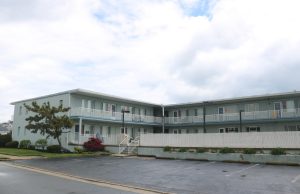In the soft light of an Ocean City sunrise, new split-rail fences paint a pretty picture as they angle through the dunes and mark pathways to the beach.
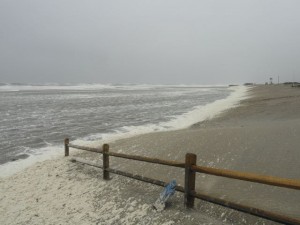
But in the howling winds of a nor’easter with the ocean lapping at their posts, the same fences start to look a less peaceful and a little more like potential battering rams.
That’s likely the image the city had when it passed an ordinance in 1993 regulating steps and ramps that provided access to the beach from private beachfront properties.
“Cognizant of the potential harm of steps or ramps in the event of rising tidal water, but desirous of providing beach access to privately or publicly owned beach front lots, the City wishes to adopt and enforce rules and regulations governing the manner in which ramps and steps may be installed on the beach …,” the ordinance states.
The local law (18-8) goes on to require that all such structures be portable — to be moved and stored safely within 24 hours of any National Weather Service coastal flood or hurricane watch/warning. It also requires that owners register the name of the person responsible for removing the steps and authorizes the city to do the work, if that person doesn’t.
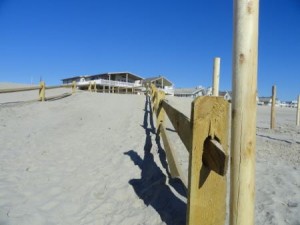
So it’s with a mix of curiosity and dismay that beachfront property owner Jeffrey Monihan looks out on the hundreds of sections of split-rail fence recently installed between 37th Street and 59th Street as part of a massive Army Corps of Engineers beach and dune replenishment project.
Monihan owns property on the 5600 block of Central Avenue and said he was arrested in the early 1990s around the time the ordinance was first passed. He had constructed concrete stairs over the rocks that line the bulkhead in front of his home.
The case ultimately was buried by time and new sand from a beach replenishment project that took the urgency away from the issue, according to Monihan.
But for him, the question remains: How did split-rail fence get approved?
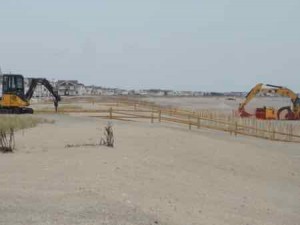
“The primary factor seems to be aesthetics,” Army Corps spokesman Richard Pearsall said. “But split rail also works well. The purpose of the crossover fencing is to serve as a delineation between the dune and the crossovers. It discourages people from walking on and destroying the dune grass, while at the same time allowing sand to pass through and across. The local sponsors pick what they want in terms of the style, and the split rail has become the standard up and down the Jersey coast.”
“It’s possible that fence debris could cause some additional damage during a major storm that breaches the dune, but in such an extreme event, any additional damage from floating or projectile fence debris would be relatively minor compared to the primary storm damages that would occur from flooding and direct wave impact,” Pearsall said.
The state Department of Environmental Protection Division of Land Use also approved the dune crossovers, according to DEP spokesman Bob Considine.
He suggested the relevant permit dates back to 2006 and includes fencing, crossovers and materials — with the city able to decide what fence to use.
Julie Baumgardner, who lived on the beachfront at 30th Street at the time, submitted a petition of 40 names in 2013, asking the city to use sand fence instead of split-rail.
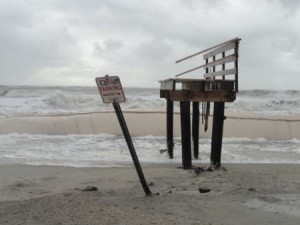
She said split-rail is ineffective as a deterrent — with people easily climbing over it and walking on the dunes. She also said it does little to allow new sand to collect on the dunes, as traditional sand fencing does. And she supported Monihan.
“They break apart and become projectiles,” Baumgardner said.
The city ultimately used sand-fencing in addition to split-rail at 30th Street and some nearby crossovers.
With beach replenishment recently completed at the south end of Ocean City and with a new project expected to start at the north end next week, the concern likely will fade with the ocean a safe distance away.
But it was three years ago today (Oct. 29, 2012) that Superstorm Sandy leveled dunes at the north and south ends of Ocean City. Earlier this month and again on Wednesday, a strong northeast swell carved into the dunes again at many spots on the north end.





